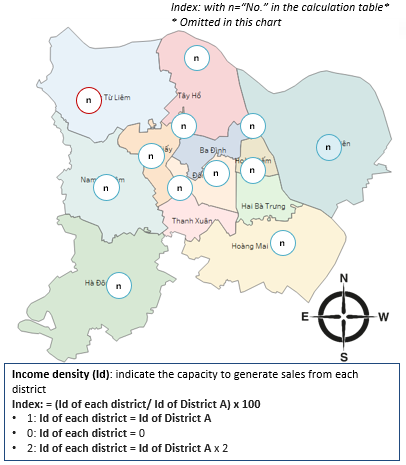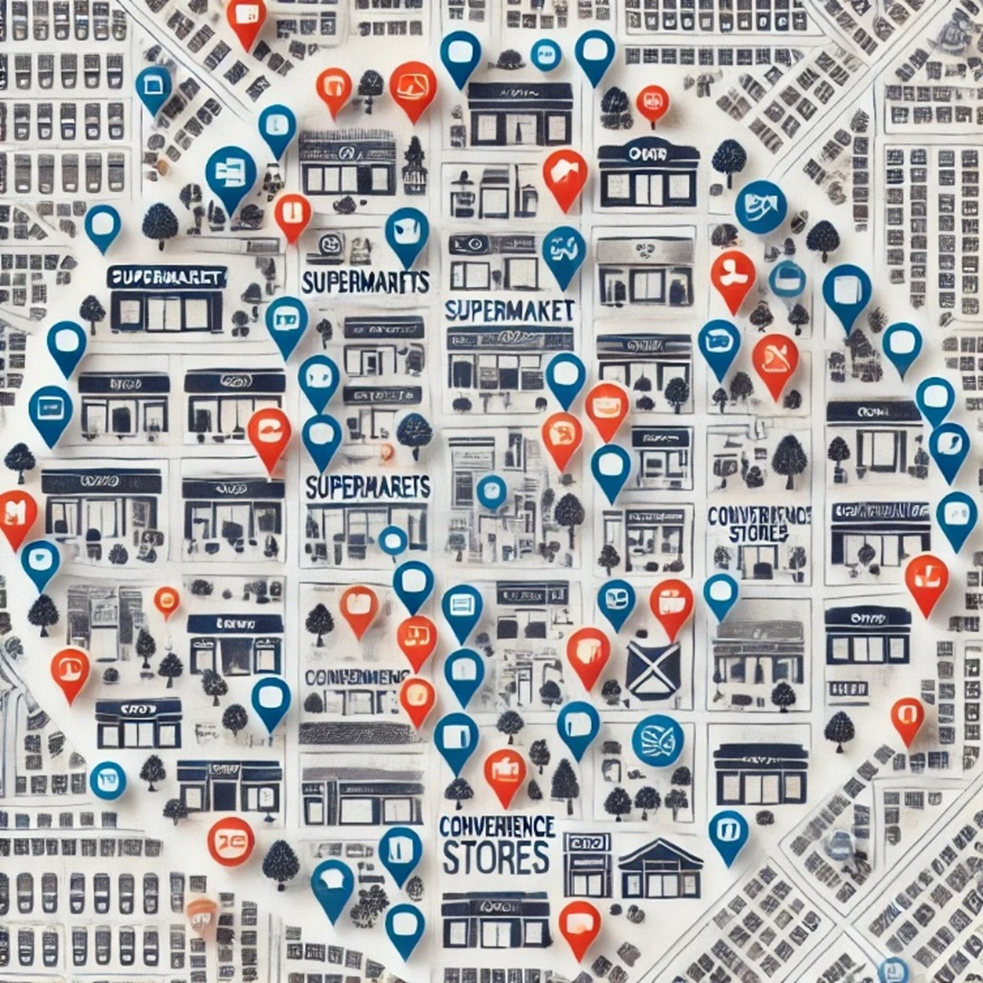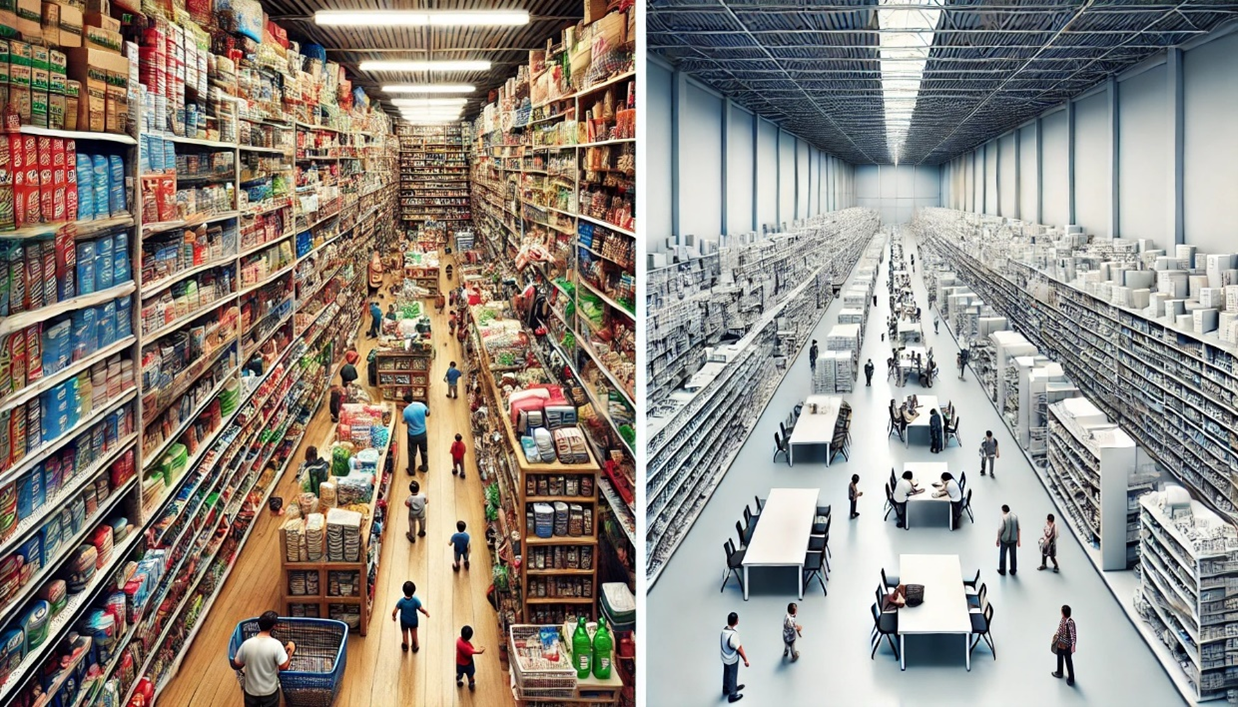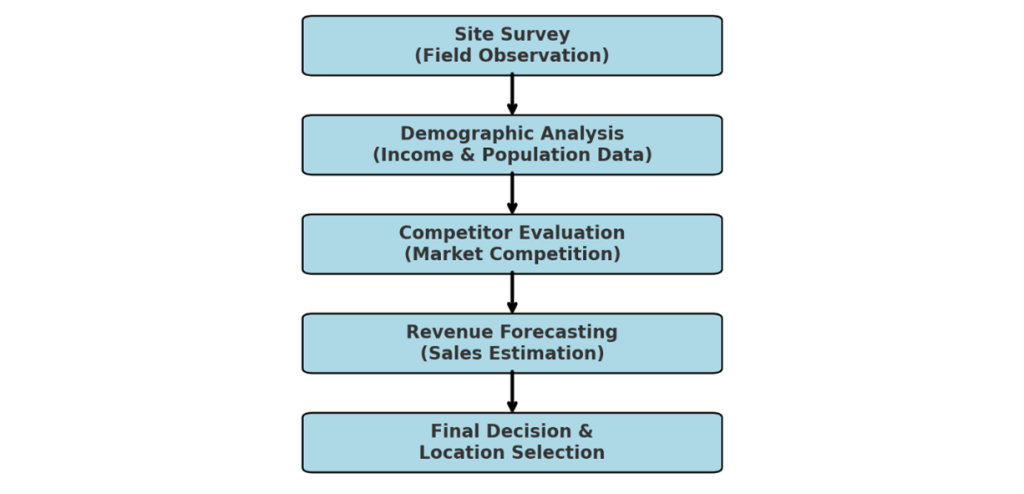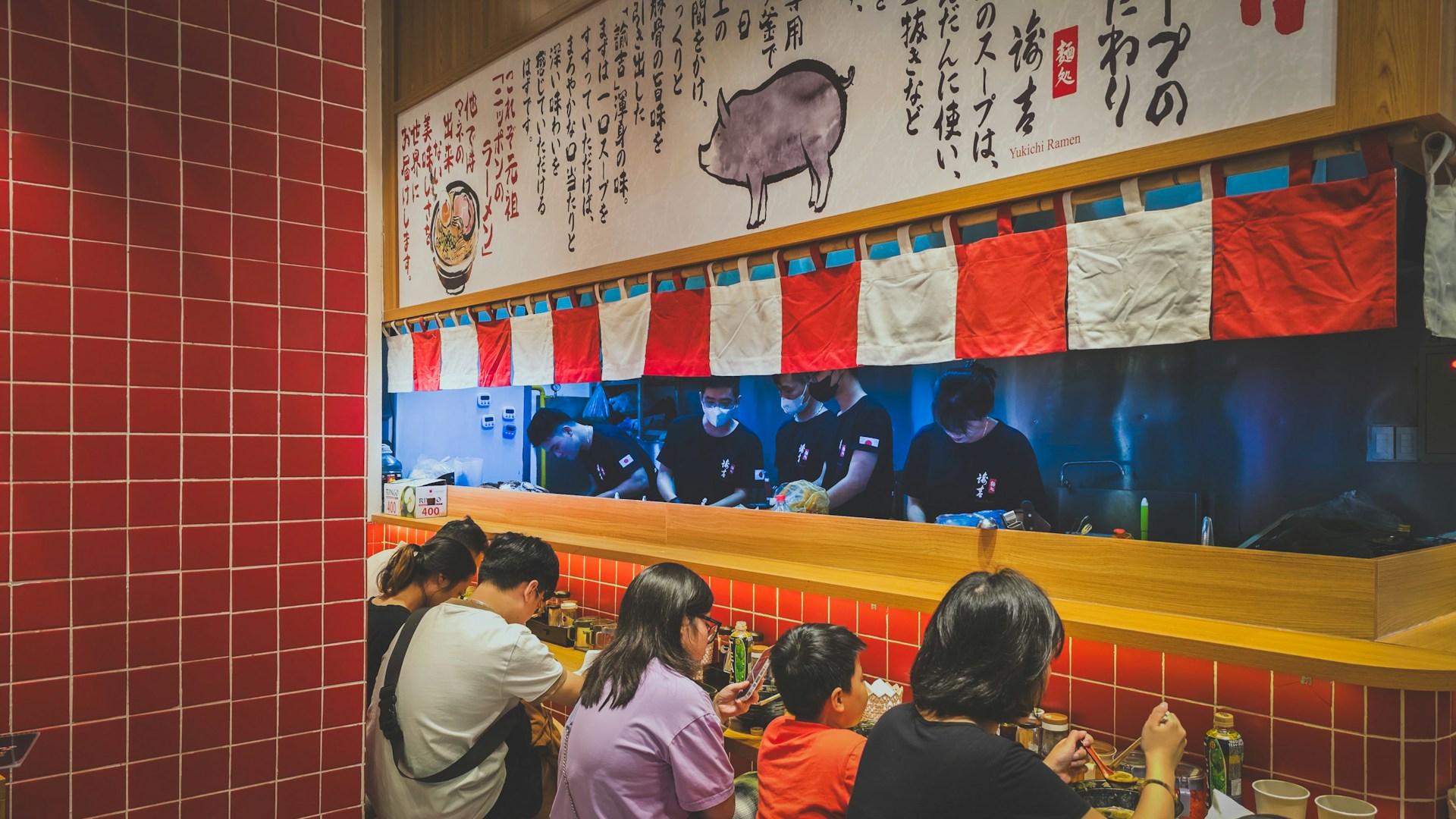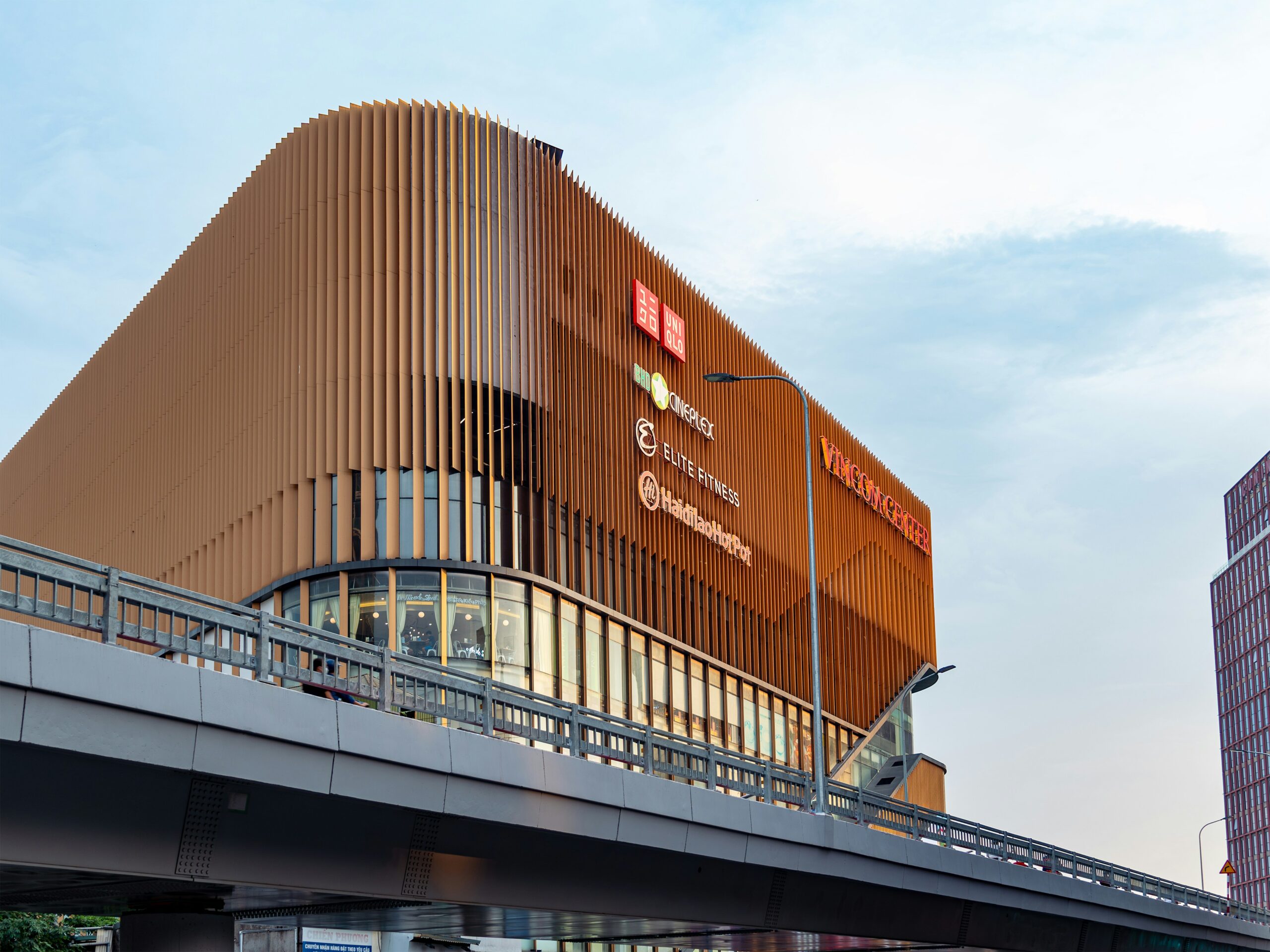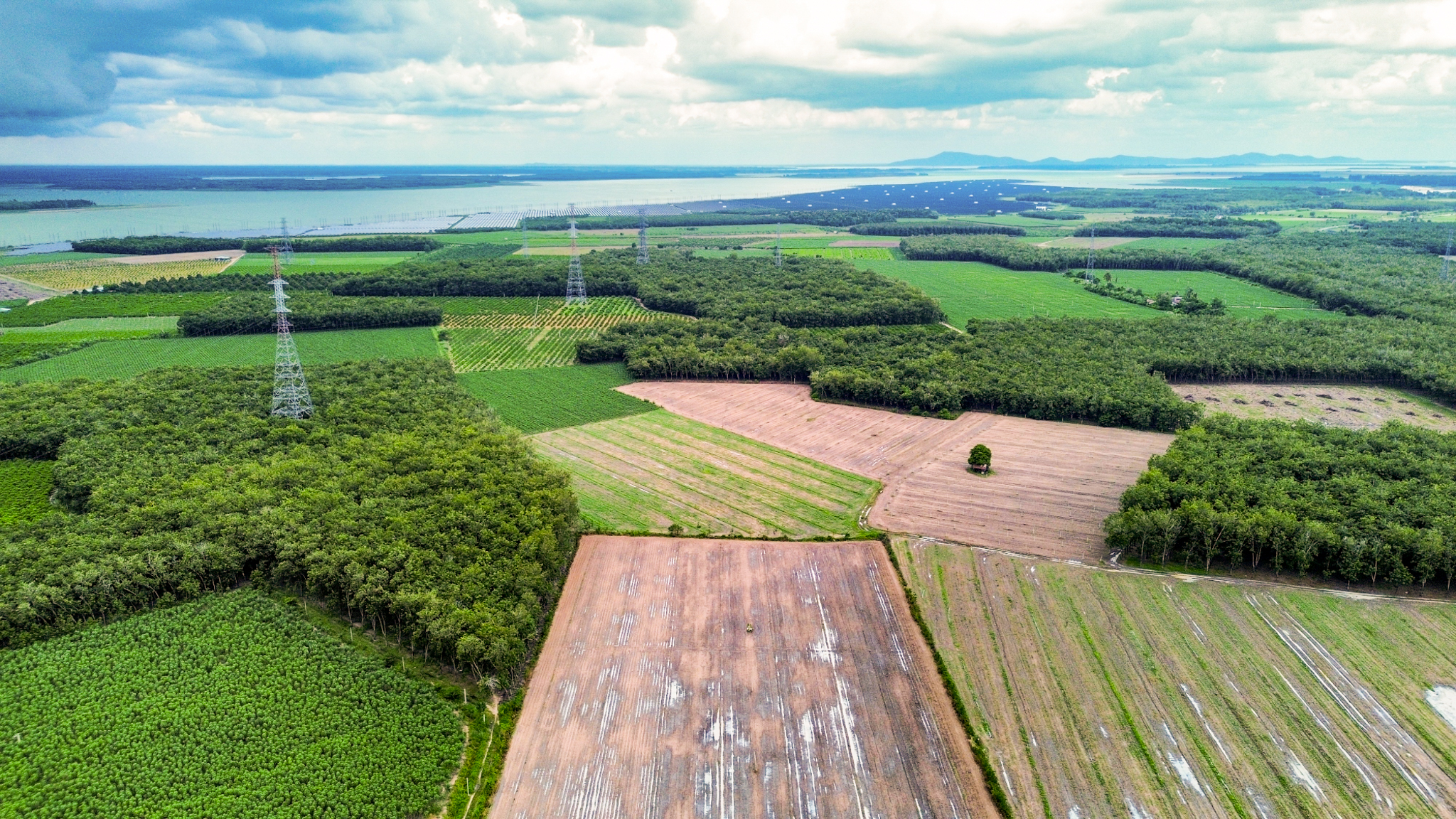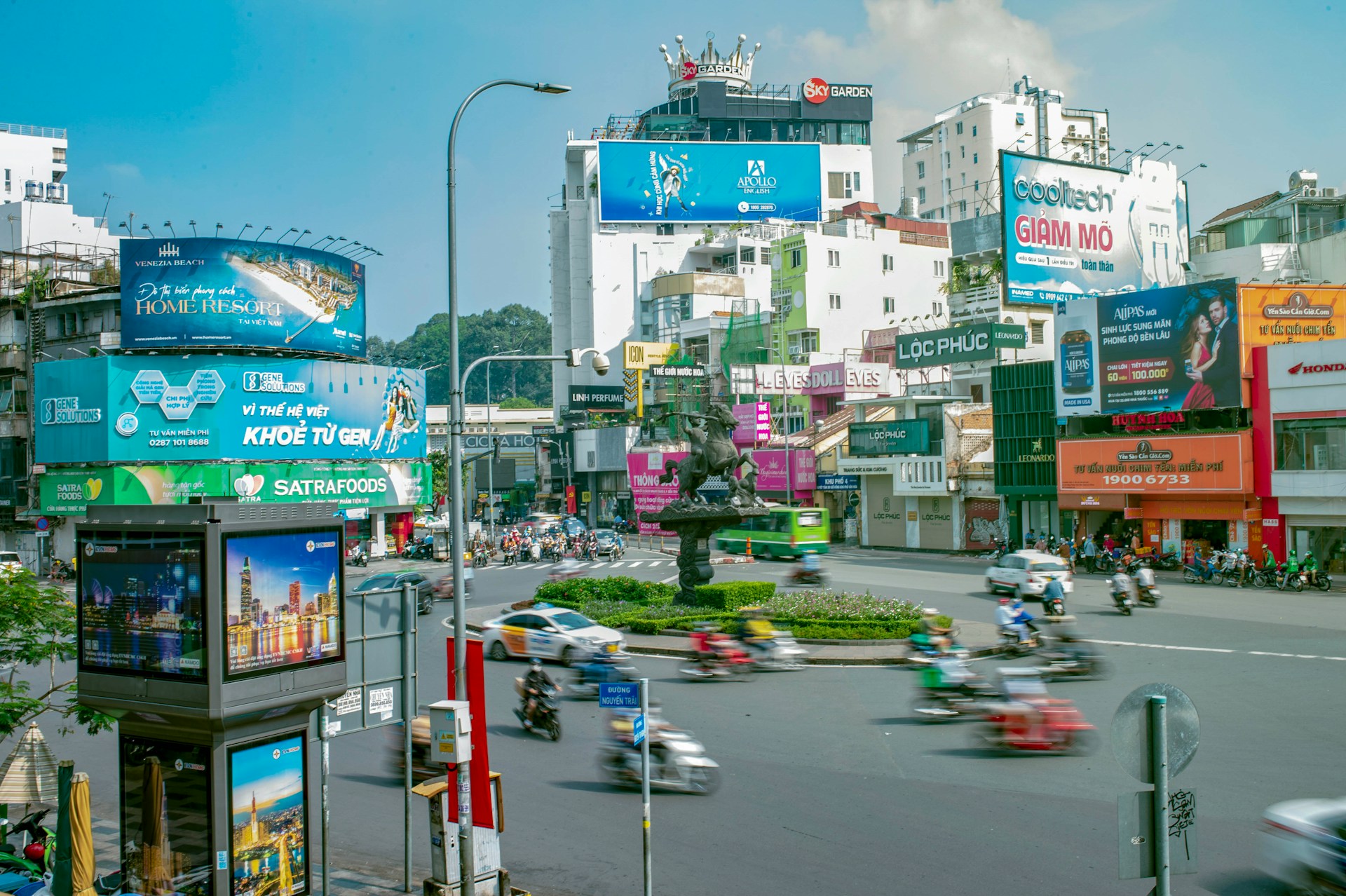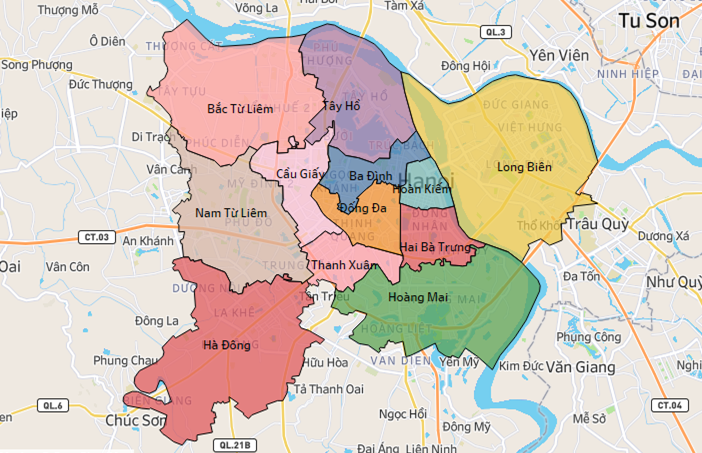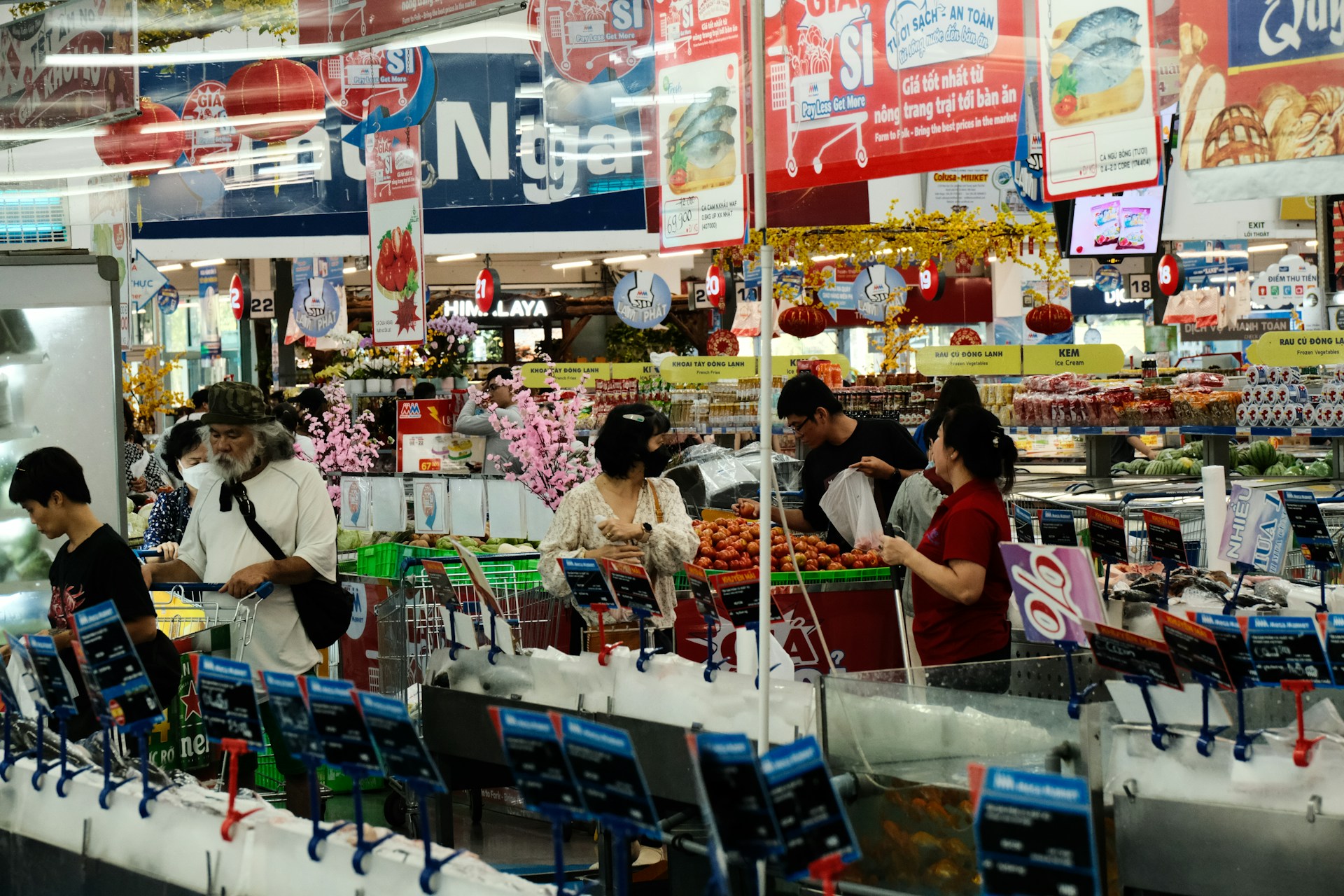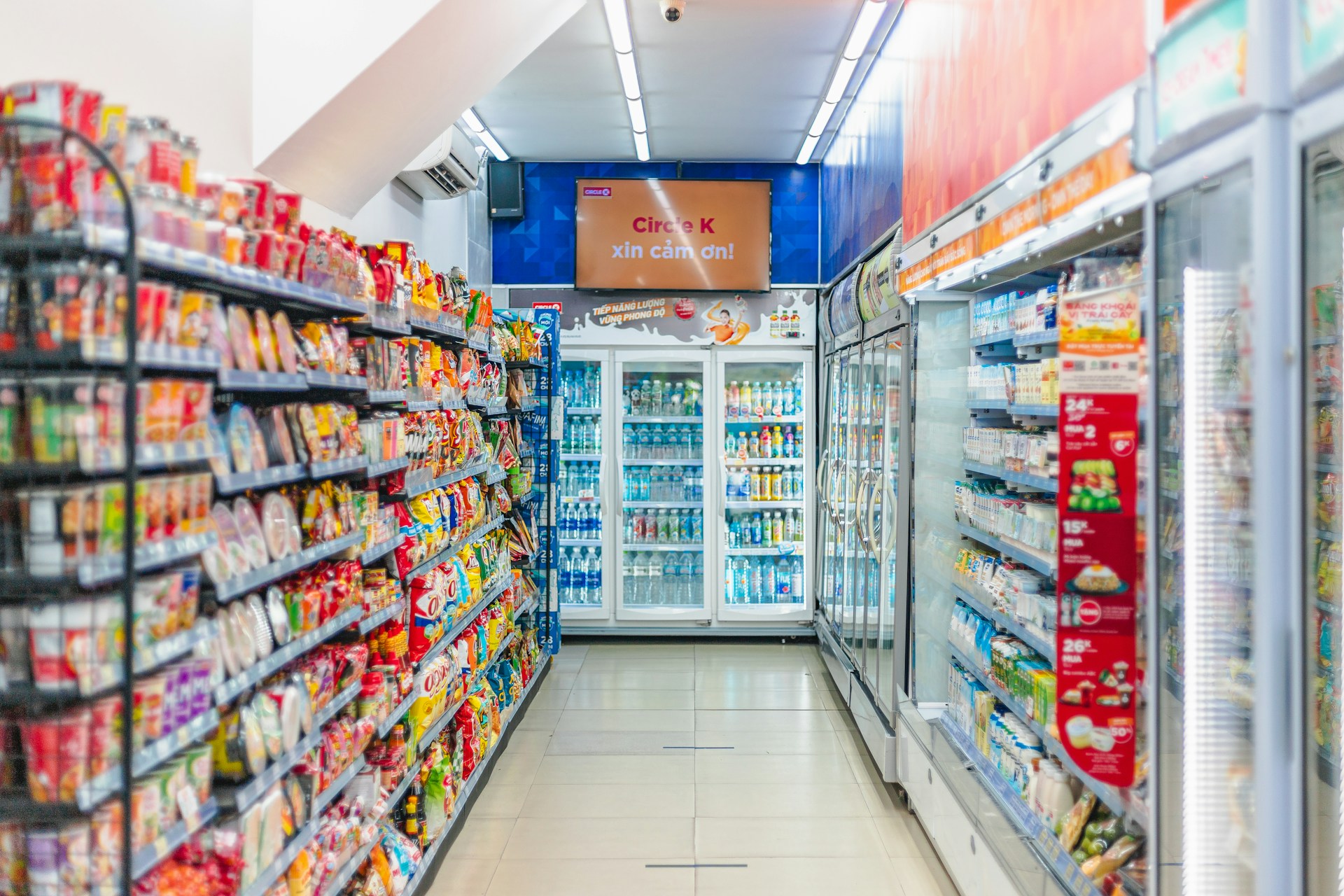
132월2025
최신 뉴스 및 보고서 / 베트남 브리핑
댓글: 댓글 없음.
사업장 위치 선택은 모든 회사, 특히 소매 부문에서 가장 전략적인 결정 중 하나입니다. 적합한 위치는 수익을 늘릴 뿐만 아니라 장기적인 사업 지속 가능성을 보장합니다. 그러나 위치를 선택하는 과정은 간단하지 않으며 인구 밀도, 소비자 습관, 경쟁 수준, 교통 인프라 및 사업 운영에 영향을 줄 수 있는 기타 기본 요소를 포함한 다양한 요소를 고려해야 합니다.
양적 데이터 분석 외에도 위치의 편의성, 지역의 장기적 개발 추세, 타겟 고객에게 사이트의 매력도와 같은 여러 비재정적 요인도 최종 결정에 중요한 역할을 합니다. 실제로 많은 매장은 혼잡한 지역에 있음에도 불구하고 소비자 습관과의 불일치나 고객에게 다가가는 데 어려움이 있어 예상 수익을 달성하지 못합니다.
이 기사에서는 사업장 입지를 선택할 때 흔히 겪는 문제를 분석하고, 기업이 효과적으로 평가하고 정보에 입각한 결정을 내리는 데 도움이 되는 접근 방식을 제안합니다.
1. 사업장 위치 선택의 과제
1.1. 주변 주민 특성의 영향
사업장 위치를 평가하는 데 가장 중요한 요소 중 하나는 지역 주민의 특성, 특히 쇼핑 행동과 현대식 소매 채널에서 지출하려는 의지를 이해하는 것입니다. 일부 중심 지역에서는 인구 밀도가 높고 보행자가 많지만 대부분 주민이 좁은 골목길에 위치한 타운하우스나 오래된 아파트 단지에 살고 있다면 지역 시장이나 작은 동네 상점과 같은 전통적인 소매 채널을 선호할 수 있습니다.
그림 1: 다양한 고객 세그먼트를 가진 베트남의 습식시장과 슈퍼마켓 이미지
한편, 젊은 세대는 슈퍼마켓, 편의점 또는 쇼핑몰에서 쇼핑하는 쪽으로 전환하는 경향이 있지만, 이러한 전환은 즉시 일어나지 않으며 시간이 필요합니다. 이는 매장 오픈 초기의 사업 성과에 영향을 미칠 수 있습니다. 쇼핑 행동의 변화를 예측하는 것은 적절한 투자 결정을 내리는 데 중요합니다.
베트남의 시장 조사에 따르면 평균 소득이 낮은 지역은 고소득 지역보다 전통적인 쇼핑 습관을 더 오래 유지하는 경향이 있습니다. 이는 주로 노동 계층, 노동자 또는 노인이 거주하는 지역에서 특히 그렇습니다. 반대로 인구 통계가 젊거나 도시화가 빠른 지역은 슈퍼마켓과 편의점 모델을 더 빨리 도입하는 경향이 있습니다.
그림 2: 하노이의 지구별 소득 밀도에 대한 B&Company 분석
1.2. 지역 관리 및 운영 문제로 인한 위험
모든 쇼핑 센터나 상업 지역이 효율적으로 운영되는 것은 아닙니다. 일부 지역은 경영에 대한 평판이 좋지 않거나, 서비스 품질이 낮거나, 운영이 불안정하여 고객 트래픽이 감소할 수 있습니다. 주차 공간 부족, 위생 상태 불량, 지역 내 기업 간 갈등과 같은 문제는 고객을 억제하여 사업 효율성을 떨어뜨릴 수 있습니다.
그림 3: 관리 부실의 비용: 한때 번창했던 쇼핑몰이 지금은 버려진 모습
예를 들어, 새로 지은 쇼핑 센터는 많은 리테일 브랜드의 관심을 끌 수 있지만, 경영과 운영이 부적절하다면 고객 수는 시간이 지남에 따라 감소할 것입니다. 이는 특히 고객 유지가 쇼핑 경험에 크게 의존하는 슈퍼마켓과 편의점에 매우 중요합니다. 사업 환경이 적합하지 않거나 충분한 주차 공간과 좋은 고객 서비스와 같은 필수적인 편의 시설이 부족한 경우, 일급 위치라도 높은 수익을 보장할 수 없습니다.
1.3. 경쟁과 고객 세분화의 영향
사업장 위치를 선택하는 또 다른 핵심 요소는 해당 지역의 경쟁 수준입니다. 같은 지역에 슈퍼마켓, 편의점 또는 식료품점이 너무 많으면 고객이 분산되어 새로운 사업의 성공 가능성이 줄어들 수 있습니다.
그림 4: 슈퍼마켓과 편의점이 많은 지역의 이미지
매장은 중심 위치에 있기 때문에 고객을 유치할 것으로 기대할 수 있지만, 경쟁사가 더 넓은 판매 구역, 더 나은 주차 시설 또는 더 경쟁력 있는 가격을 가지고 있다면, 새로운 매장의 매출은 부정적인 영향을 받을 수 있습니다. 또한, 일부 소규모 매장은 적절한 고객 세그먼트를 효과적으로 타겟팅하고, 적절한 가격 책정 전략을 구현하거나, 고유한 제품을 제공하기 때문에 예상치 못하게 높은 매출을 달성할 수 있습니다.
시장 평가는 경쟁자의 수만 고려하는 것이 아니라 각 매장의 운영 방식도 분석해야 합니다. 마케팅 전략이 잘 실행되거나 편리한 위치를 갖춘 소규모 매장은 효과적인 고객 참여가 부족한 대규모 매장보다 더 높은 수익을 창출할 수 있습니다.
그림 5: 사람이 붐비는 작은 매장과 비어있는 넓은 매장의 이미지
2. 적합한 사업장 위치 선택에 대한 접근 방식
데이터 분석은 인구 지표에 국한되지 않고 현장 조사와 결합하여 고객 쇼핑 습관에 대한 더 깊은 통찰력을 얻어야 합니다. 예를 들어, 인구 밀도가 높은 지역은 대부분 주민이 전통 시장에 충성하는 경우 여전히 슈퍼마켓에 적합하지 않을 수 있습니다.
또한, 지역 경영에 대한 정보를 확인하는 것이 필수적입니다. 쇼핑 센터의 공실률이 높거나 시간이 지남에 따라 고객 트래픽이 감소하는 경우 이는 운영 효율성이 낮다는 경고 신호일 수 있습니다.
또 다른 중요한 전략은 실제 데이터를 기반으로 한 매출 예측입니다. 유사한 매장의 매출에만 의존하는 대신, 기업은 보행자 수, 평균 구매력, 고객 충성도 수준을 기반으로 계산해야 합니다.
그림 6: 사업장 입지 평가 프로세스
3. B&Company의 사업장 입지 분석 솔루션
B&Company Vietnam은 기업이 가장 적합한 위치를 선택할 수 있도록 포괄적인 데이터 기반 솔루션을 제공합니다. 베트남 가계 소득 데이터베이스, 기업은 주, 지구, 구역 전체의 가계 소득에 대한 자세한 정보에 액세스하여 실제 구매력을 평가할 수 있습니다. 또한 B&Company의 엔터프라이즈 데이터베이스(E-DB) 베트남에서 운영 중인 90만 개 이상의 기업에 대한 데이터를 분석하여 기업이 경쟁 수준을 평가할 수 있도록 해줍니다.
또한 B&Company는 현장 설문 조사, 거주자 인터뷰, 사업 성과에 영향을 미치는 요인 평가를 제공합니다. 정량적 데이터 분석을 현장 조사와 통합함으로써 기업은 사업 위치에 대한 정보에 입각한 결정을 내리고, 위험을 최소화하고, 투자 전략을 최적화할 수 있습니다.
4. 결론
사업장 위치 선택은 데이터 분석과 현장 조사를 결합해야 하는 복잡한 과정입니다. B&Company의 분석 도구의 지원을 통해 기업은 보다 정확한 결정을 내려 사업 효율성과 장기적으로 지속 가능한 성장을 보장할 수 있습니다.
* 본 기사의 내용을 인용하고자 하시는 경우, 저작권을 존중하여 출처와 원 기사의 링크를 함께 명시해 주시기 바랍니다.
| 비앤컴퍼니
2008년부터 베트남에서 시장 조사를 전문으로 하는 최초의 일본 기업입니다. 업계 보고서, 업계 인터뷰, 소비자 설문 조사, 비즈니스 매칭을 포함한 광범위한 서비스를 제공합니다. 또한, 최근 베트남에서 900,000개 이상의 기업에 대한 데이터베이스를 개발하여 파트너를 검색하고 시장을 분석하는 데 사용할 수 있습니다. 문의사항이 있으시면 언제든지 문의해주세요. info@b-company.jp + (84) 28 3910 3913 |

